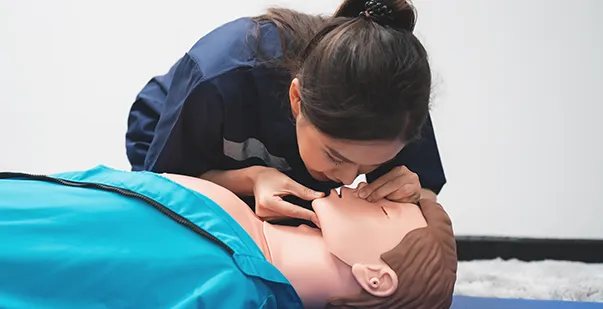As emergency responders, people should know the importance of effective ventilation during cardiopulmonary resuscitation (CPR). Delivering the right volume of air is a delicate balance that can make or break patient outcomes. Yet, amidst the chaos of a medical emergency, it’s easy for even the most seasoned professionals to second-guess themselves.
According to the latest guidelines, approximately 500-800 ml of air should be delivered with each manual ventilation during Bag-Valve Mask (BVM) ventilation. The technique usually involves using a face mask, a self-inflating bag, and a valve system to deliver breaths to the victim’s lungs. Therefore, knowing the correct volume of air during BVM ventilation is crucial for patient care.
In this guide, we will discuss the importance of proper BVM techniques, the volume of air required to conduct them, and other details.
Master ACLS Now
Get ACLS certified with confidence
Importance of the BVM Ventilation Technique
Cardiopulmonary resuscitation (CPR) procedures are incomplete without the BVM ventilation technique. It enables you to inflate the victim’s lungs with oxygen-rich air manually. As a result, it supports efficient gas exchange and maintains vital organ functions.
This efficient ventilation technique enables you to offer effective respiratory support to cardiac arrest victims in critical situations. This ensures optimal oxygenation and proper ventilation of the patient’s lungs to maintain vital organ function and improve patient outcomes.
As a healthcare provider or rescuer, you must be skilled in BVM ventilation techniques. It is essential to know the correct volume of air during BVM to ensure you are employing the correct life-saving technique. This is how you can deliver the correct amount of air with each bag squeeze to save the victim’s life. As a result, you can ensure adequate oxygenation during resuscitation efforts as a healthcare provider.
Correct Volume of Air to Deliver During BVM Ventilations
The correct volume of air to deliver during BVM ventilation depends on several factors. You must consider a few things about the patient, like their size, age, and health conditions. This ensures you deliver the correct amount of air effectively. This often includes monitoring the bag valve mask ventilation rate during BVM ventilation.
Generally, the correct volume of air to deliver during BVM ventilations in adults and adolescents is 500 to 600 milliliters. However, there is a separate guideline for tidal volumes for pediatric patients, who usually require a smaller volume. Infants under 1-year-old need over 20-30 milliliters per kilogram of body weight. On the other hand, children from 1 to 8 years of age need around 10-15 milliliters per kilogram.
How to Determine the Right Tidal Volume for BVM Ventilation?
Tidal volume refers to the volume of air delivered to the patient’s lungs with each compression of the bag in BVM ventilation. It is important for refilling oxygen and removing carbon dioxide from the lungs. The tidal volume also supports gas exchange and maintains vital organ function in the victim’s body. Adequate tidal volume delivery ensures that all the important organs in the body receive sufficient oxygenation in critical situations. To determine the correct tidal volume for BVM ventilation, you must follow a multifaceted approach.
- Factors such as the victim’s size, age, and health conditions usually affect the amount of air required for effective ventilation.
- You must also consult established CPR guidelines and protocols which offer recommendations for tidal volume. This is usually determined based on different types of patient demographics and clinical presentation.
- Monitor the patient’s response to ventilation efforts and overall respiratory status continuously. This will enable you to adjust tidal volume deliveries as needed.
- You must also be prepared as a rescuer to adapt tidal volume delivery based on the specific circumstances of the CPR situation. This usually involves considering factors like equipment availability, the presence of bystanders, and your experience level as a rescuer.
Follow the above guidelines to ensure just the right amount of tidal volume to be delivered during BVM ventilation. Most importantly, knowing the correct volume of air to deliver during BVM improves the chances of successful resuscitation.
Read more: Basic airway management in adults.
Best Techniques to Deliver Correct Volume of Air During BVM
Knowing what is the correct volume of air to deliver during ventilations is not enough for healthcare professionals or rescuers. You must also learn how to deliver the air correctly during the BVM process. Failing to do so may lead to health complications like overinflation of the lungs, increased intrathoracic pressure, or even gastric inflation. As a result, it may compromise patient safety and reduce the effects of resuscitation efforts. So, here are some best techniques you can follow to know the correct volume of air to deliver during ventilations.
-
One-Handed Technique
This technique usually involves using one hand to hold the mask and create a seal over the patient’s face. Then, you use the other hand to squeeze the bag to deliver air. The one-handed technique is considered beneficial because it offers flexibility and control. This particular technique is usually suitable for single-caregiver scenarios.
-
Two-Handed Technique
With this technique, you must work with another healthcare provider to deliver air during ventilations. Here, you will hold the mask to maintain a secure seal while your partner squeezes the bag to deliver volumes of air. The two-handed technique is the best way to ensure stable ventilation, especially in critical situations.
Risks With Incorrect Air Volumes During BVM Ventilation
Delivering the right volume of air during Bag-Valve-Mask (BVM) ventilation is critical. Incorrect air volumes can lead to severe complications that may impact the patient’s health. The following section mentions risks that can help healthcare professionals provide safer and more effective care:
-
Hyperventilation: Too Much Air Delivered
Hyperventilation occurs when too much air is given, causing a drop in carbon dioxide levels. This can reduce blood flow to the brain and lead to respiratory alkalosis. Additionally, it may increase chest pressure, which can strain the heart and impair its ability to pump effectively.
-
Hypoventilation: Too Little Air Delivered
Hypoventilation happens when the patient receives insufficient air, leading to low oxygen levels (hypoxia). This can cause respiratory acidosis, where excess carbon dioxide builds up in the blood. Without adequate oxygen, vital organs may not function properly, posing serious health risks.
-
Gastric Insufflation: Air in the Stomach
When air is incorrectly directed into the stomach instead of the lungs, gastric insufflation results. This can increase the risk of vomiting, which may lead to inhalation of stomach contents. Such incidents can cause severe lung infections and potential damage over time.
-
Barotrauma: Excessive Air Pressure
Delivering air with excessive pressure can cause barotrauma, damaging the lungs. In severe cases, this may result in lung collapse (pneumothorax). Proper technique is crucial to prevent lung injuries, ensuring the air is directed safely into the lungs without causing harm.
Read more: What Is the Effect of Excessive Ventilation?
Determining the Volume of Air During BVM Ventilation!
BVM Ventilation is often considered to be the basis of effective airway management in patients. However, you must know how to implement the correct volume of air during BVM to ensure adequate oxygenation without causing lung injury or gastric inflation. This involves learning some basic life-saving skills for laypeople and advanced cardiac life support (ACLS) related skills for healthcare professionals. It also enables you to indulge in considerable practice as a healthcare provider before helping victims in emergencies.







